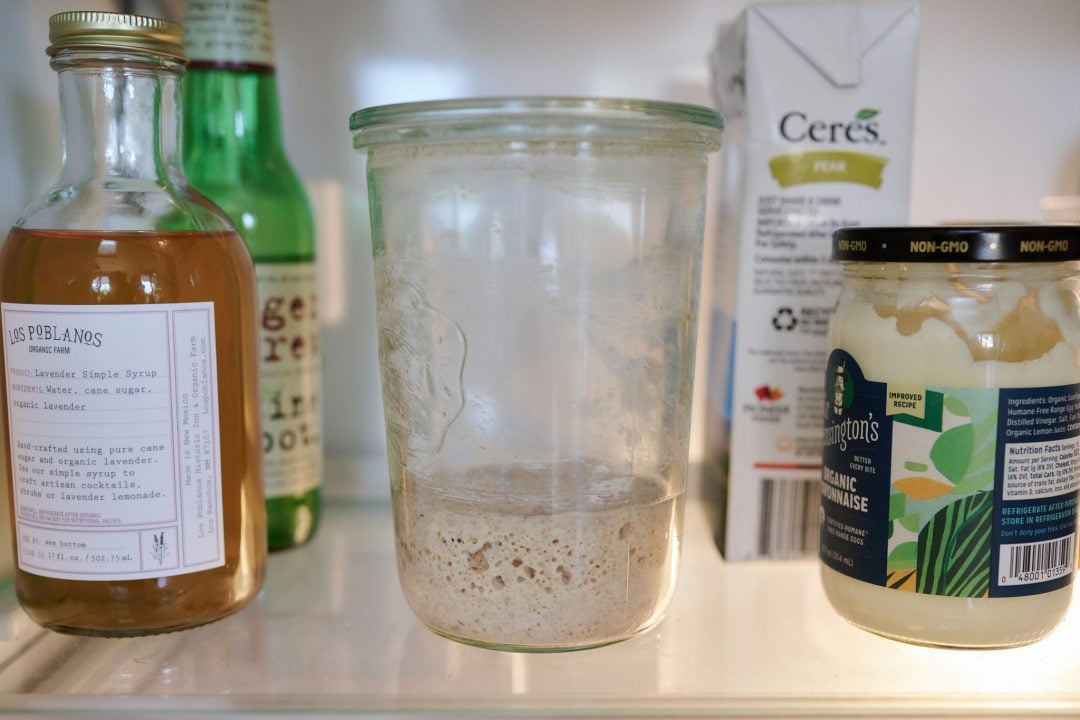If you’re a proud parent of a sourdough starter, much as you love caring for the culture of wild yeast, you know there will come a time when you’ll have to take a little break. Whether it’s because you’re headed out on a multi-week vacation, you get too busy with other responsibilities, or you don’t feel like baking for a bit, you need not stress about feeding your sourdough starter, as long as it’s properly stored. Rest assured, your refrigerator—and this guide to storing your sourdough starter in the fridge—has you covered.
…you need not stress about feeding your sourdough starter, as long as it’s properly stored.
This is a pragmatic guide to feeding your starter so it stays healthy in the fridge—and how to revive it when you are ready to get baking again. The steps are straightforward, but there are a few important bits that’ll help ensure your starter doesn’t dry out or get moldy during its rest.
But most importantly, how is it even possible to store a sourdough starter in the fridge for an extended period of time?
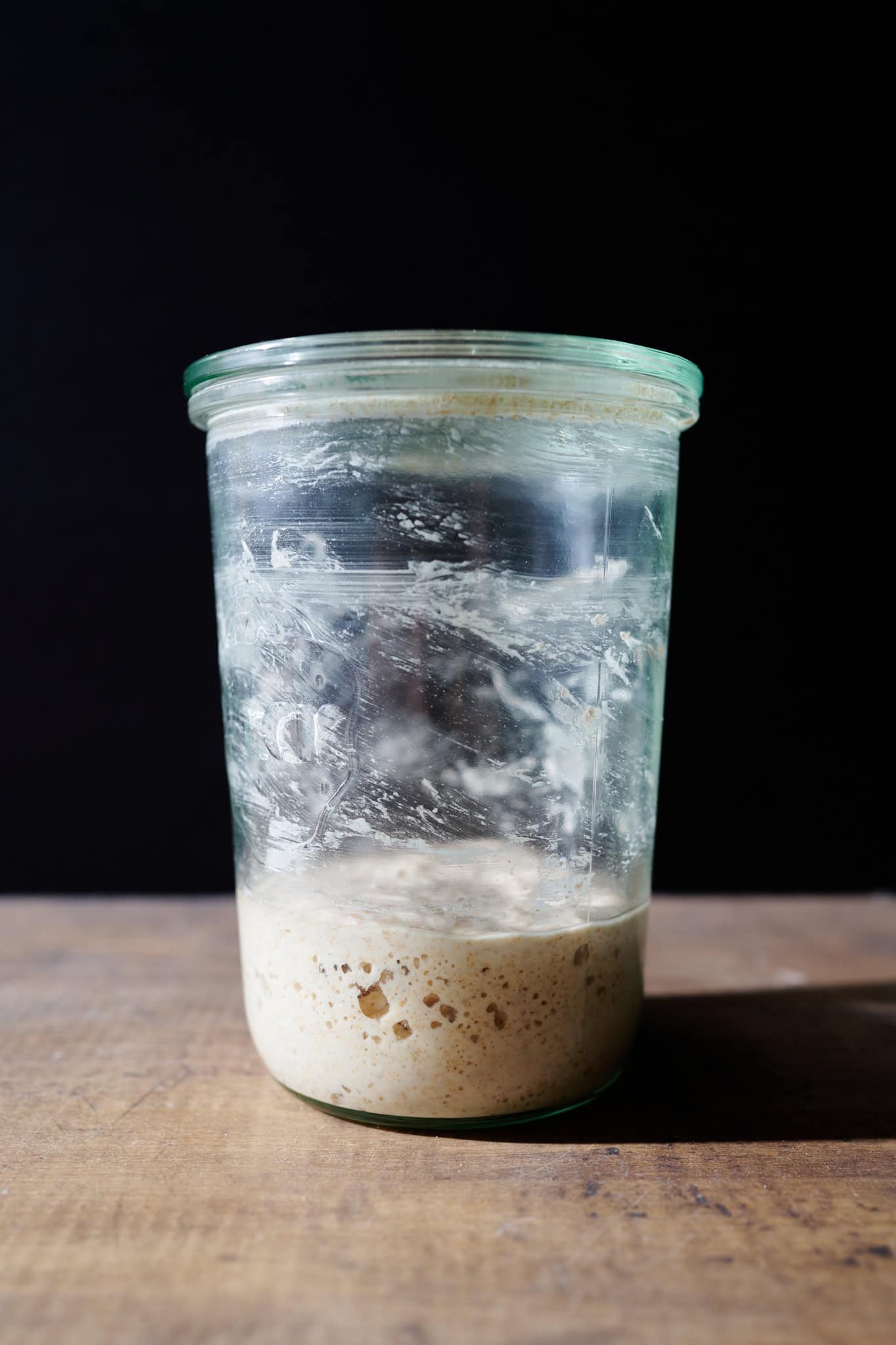
Can I Store a Sourdough Starter in the Fridge?
Yes, you can store your sourdough starter in the fridge! A sourdough starter is very resilient. However, the cold temperatures of a typical home fridge can be stressful for your starter. Being in the fridge won’t harm your starter, but it does mean that after you take it out, it usually takes a few feedings at room temperature to ramp back up to full strength.
Read on for my tips for quickly and effectively reviving a sourdough starter. First, let’s look at how to put it into the fridge before a period of time away.
Storing a Sourdough Starter in the Fridge, Step by Step
It’s best to store your sourdough starter in a closed container to prevent it from drying out. I like to use the same jars I use to maintain my starter.
Here are my steps for storing a sourdough starter in the fridge:
- Start with your ripe (unfed) sourdough starter and give it a feeding (discard ripe starter, add fresh flour and water). It can help to reduce the hydration, but it’s not mandatory. For instance, with my 100% hydration sourdough starter, I will typically feed it with 20% less water than normal to stiffen it.
- Place the lid on top and seal it shut. Set a timer for 1 hour.
- After an hour of room-temperature fermentation, place the jar in the refrigerator for up to three weeks without feedings.
Is a Liquid or Stiff Starter Best for the Fridge?
I have found that a stiffer starter, or one with less water to total flour, can handle the cold temperatures of the refrigerator a little better than those with 100% hydration. Reducing the water can help ensure it doesn’t over-ferment while in the refrigerator, and like with a stiff levain, it has proven to be more resilient for me. Less water in the mixture ultimately prevents excessive acidification and breakdown.
What is a stiff sourdough starter, exactly? By stiff, I’m referring to a starter with less water than flour, usually between 45 and 65% hydration. For example, if a starter has 100g of flour, it will have only 50g of water.

While many sourdough starters are maintained at 100% hydration—equal amounts of water and flour—it’s also possible to keep them at another hydration ranging from about 45% to over 100%. The hydration can affect the flavor profile, fermentation activity, and other characteristics—a topic for another guide in the future.
How Long Can I Keep My Sourdough Starter in the Fridge?
Generally, I have found that a starter will keep for up to three weeks in the refrigerator without a feeding. Two weeks is easy; three weeks is a little dicey, though not impossible; but for anything over three weeks, I’ll usually dehydrate my starter.
A dehydrated starter is simply when all its water is removed, resulting in a dry powder. Since yeast and bacteria require water for metabolic activity—fermentation—removing the water puts them in a safe state of hibernation. You can learn how to dehydrate your starter in the guide linked above.
Can I Store a Sourdough Starter in the Freezer?
Unlike many foods, which can be stored in the freezer to extend their life, this logic cannot be applied similarly to sourdough starters. In testing, I’ve found that very low freezer temperatures can adversely affect the bacteria and yeast balance in a sourdough starter. Instead of freezing, use the fridge for up to three weeks, or dehydrate the starter for longer storage.
While it’s possible to get a starter to bounce back from the freezer, when I tested this, it took almost a week of regular feedings and care before I started to see signs of sufficient fermentation activity to use for making sourdough bread.

How to Revive a Sourdough Starter From the Fridge
Reviving a sourdough starter in the fridge is easy, the key is to keep it warm and give it regular feedings to nurse it back to full strength.
These are the most important things you need to do to revive your starter from the fridge:
- Warm the mixture on the kitchen counter (or another warm spot)
- Feed it at least once a day, preferably twice (once in the morning and once in the evening)
- Feed your starter for at least one full day before using it to make sourdough bread
Note that when you’re reviving your starter, fermentation activity might be sluggish throughout the first or second feeding after coming out of the fridge. If you don’t see a lot of bubbles after the first feeding, try a little whole-grain rye flour with the next feeding. Whole rye flour has high nutrients and minerals that help spur fermentation.
So many feedings obviously produces a lot of starter discard. Luckily, you can use the discard from your starter at any time to make quick discard recipes like this tangy lemon poppyseed loaf or starter discard scones.

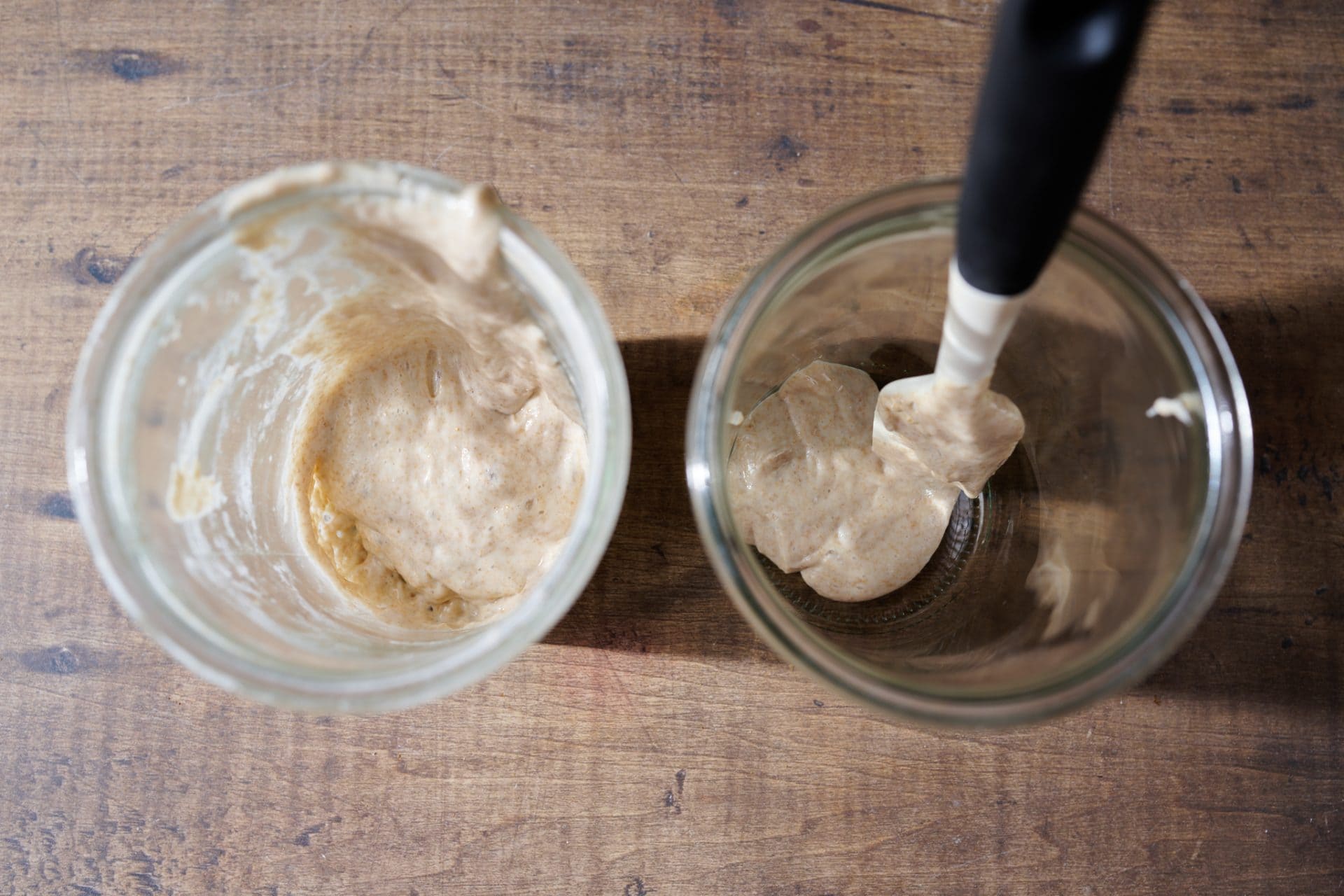
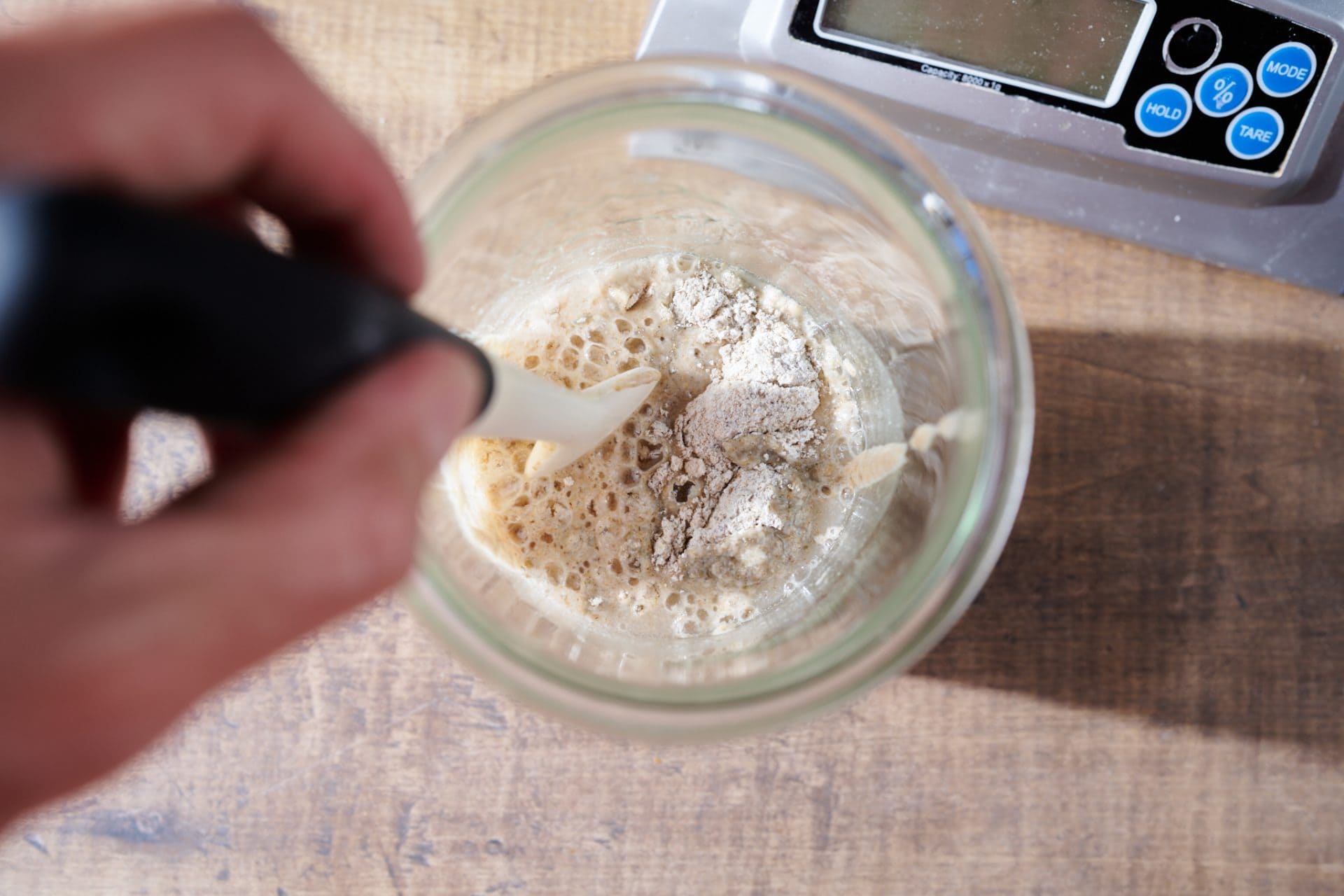
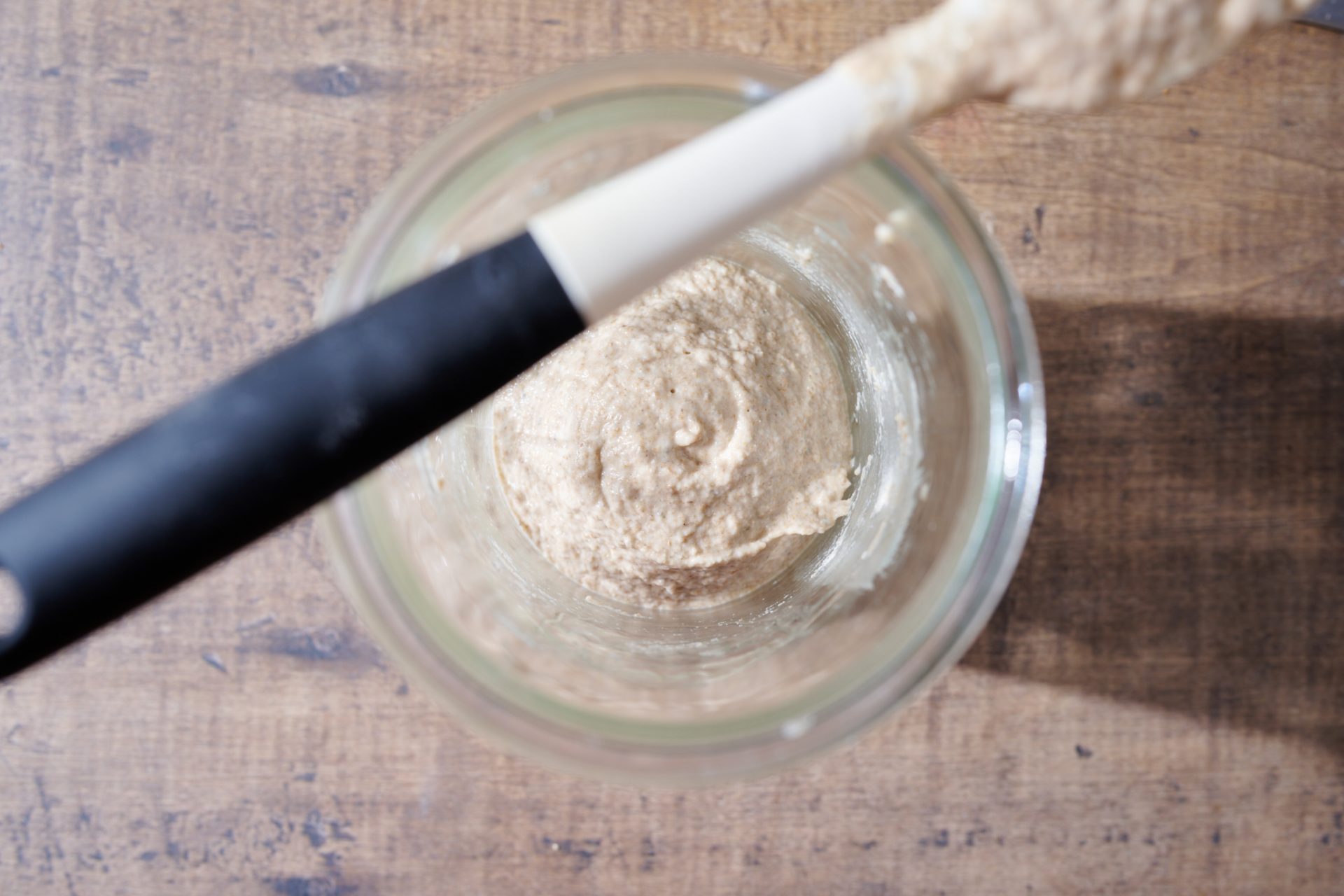
Here’s how I revive my refrigerated starter:
- Take the cold starter out of the fridge and let it warm up for 1 hour on the counter (upper-left image, above)
- Get a clean jar and scoop out about 20g of the stored starter into the new jar (upper-right image, above)
- Add fresh flour and water to the starter in whatever ratios you typically maintain your starter, mix, and let ferment on the counter for 12 hours (lower left image, above)
- Repeat the feeding process one more time and let it ferment for 12 hours
- Use to make a levain, mix directly in a batch of bread dough, or continue feeding the starter as usual
For example, this would be the sourdough starter revival schedule I use if I got home from vacation on Monday:
| Day | Starter Location | Action |
|---|---|---|
| Monday, returning from vacation | Fridge | Take it out of the fridge, let it warm up for 1 hour, then discard and feed it. Let it ferment overnight on the kitchen counter |
| Tuesday | Kitchen counter | Feed the starter in the morning and at night |
| Wednesday | Kitchen counter | In the morning, make a levain to bake with that day or continue feeding it at room temperature |

Can I Use My Sourdough Starter Straight From the Fridge?
I do not like to use my sourdough starter straight from the fridge, even if I were using the fridge to store my starter regularly, but especially after an extended period of time away. I get much better sourdough bread—in terms of flavor, volume, and texture—when my starter is kept at room temperature and fed regularly. When I take it out of the fridge, I give it at least two room-temperature feedings before using it to make bread.
My Refrigerated Starter Has Hooch On Top
If your starter has a clear liquid on top that smells like acetone, this “hooch,” as it’s sometimes called, can be safely poured out into the sink. It’s normal to see this accumulation at the top of a starter, especially if it’s at a high hydration level and stored in the fridge without feedings. If the liquid is dark, it should still be OK to use, but see the FAQ section below for how to proceed.
The Top of My Starter Is Grey
If your starter has a thick layer of grey-looking flour, this is also normal. When I see this, I scrape off the top layer and use the starter beneath.

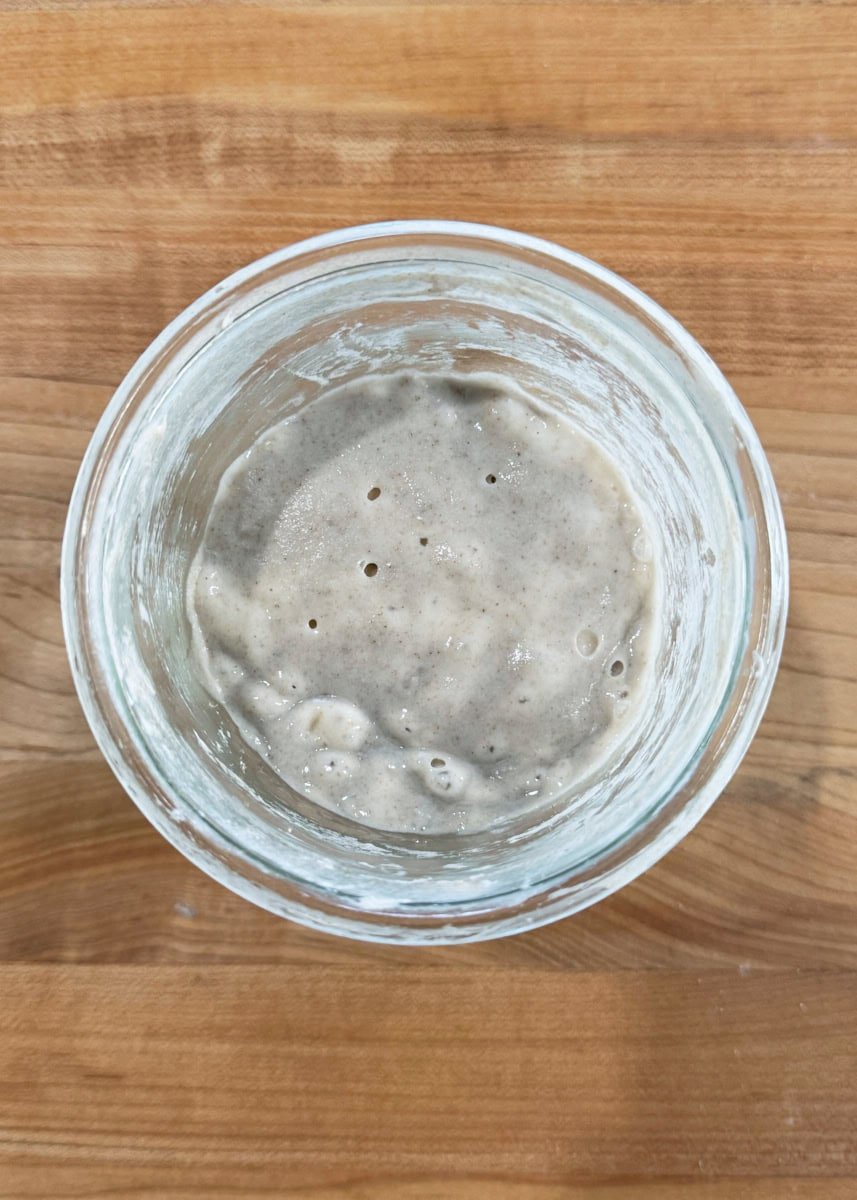
The layer of grey is not harmful as long as you don’t see signs of mold (a green or pink color or white fuzzy buildup).
See our roundup of the 21 most common sourdough starter problems with solutions for more.
Sourdough Starter Vacation FAQs
Do you store sourdough starter in the fridge in an airtight container?
Yes, I like to use an airtight container to ensure nothing gets into the sourdough starter jar and to prevent the mixture from drying out.
After being in the fridge, my sourdough starter has a dark liquid on top, is it okay?
Yes, scrape the dark liquid or flour off the top into the compost and keep the starter below that in the jar, then feed it as usual. However, if you see signs of mold (white fuzzy, pink, or red), I would toss the entire starter and create a new one.
How do you store a gluten-free sourdough starter in the fridge?
You can store your gluten-free starter in the fridge in the exact same way as a starter containing gluten. The same principles of fermentation apply: Colder temperatures reduce fermentation activity, and a home fridge is cold enough to keep a gluten-free starter on pause for up to three weeks.
What’s Next?
Are you having issues with your sourdough starter? Join the TPL Membership to ask questions, post pictures, and chat with other members!
For more tips on keeping your sourdough starter strong and healthy, including a process for exactly how I feed my starter each day, head over to our ultimate guide to keeping a sourdough starter.


